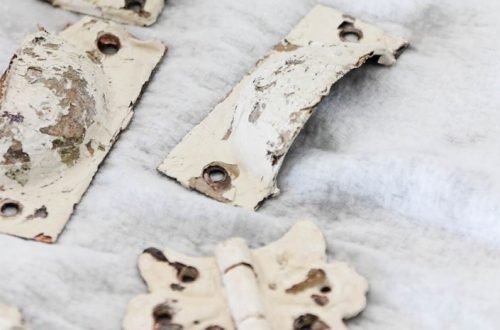Introduction to Hair Microstructure
When you think of hair, you might consider its color, length, or style. Yet, there’s an intricate world beyond what the naked eye can see. We’re talking about the microstructure of human hair, a complex composition that can only be fully understood when magnified. Studying human hair under a microscope reveals the minute details that contribute to its strength, texture, and health.

Microscopy allows us to observe the tiny scales on the hair shaft, discern the subtle differences in hair types, and understand how various factors impact hair’s condition. It’s a fascinating journey into a realm that’s invisible to us normally, yet is an integral part of our everyday life. This blog features a deep dive into the microscopic analysis of human hair, showcasing its anatomy and the factors influencing it. Whether you’re a science enthusiast or simply curious about the intricacies of human hair, you’re in for an insightful exploration.
Tools and Techniques for Microscopic Hair Examination
When it comes to studying human hair under a microscope, certain specialized tools and techniques are essential for obtaining accurate and reliable results. The following points outline the important aspects of microscopic hair examination:
Standard Light Microscopes:
For basic observations of hair structure, standard light microscopes are often sufficient.
These microscopes allow researchers to view the general characteristics of hair, such as color, length, and general shape.
However, their capabilities may be limited in terms of resolution and the ability to view finer details found in the hair shaft.
Scanning Electron Microscopes (SEMs):
When higher resolution images are needed, scanning electron microscopes (SEMs) become invaluable tools.
SEMs provide detailed, three-dimensional images of hair strands, revealing minute features such as surface textures, cuticle patterns, and any damage or alterations to the hair structure.
This level of detail is crucial for forensic investigations, biological studies, and other applications where precise hair analysis is important.
Sample Preparation:
Proper sample preparation is key to successful microscopic examination.
This process involves cutting hair strands cleanly and accurately, ensuring that the samples are representative of the hair being studied.
Once cut, the samples must be mounted appropriately on slides to prevent distortion and maintain the integrity of the hair structure during observation.
Staining Methods:
Staining methods are often used to highlight specific features of hair samples, making analysis easier and more informative.
For instance, certain stains can enhance the visibility of cuticle patterns or differentiate between different layers of the hair shaft.
By using appropriate staining techniques, researchers can gain deeper insights into the characteristics of the hair, which is beneficial for numerous applications.

Digital Imaging Software:
Recent advancements in technology have introduced digital imaging software that enhances the clarity of microscope images.
This software allows researchers to analyze hair samples more effectively by improving contrast, brightness, and resolution, making even subtle details more visible.
Additionally, digital imaging can facilitate the documentation and sharing of findings, making it easier for professionals to collaborate and share insights.
Combining Approaches:
The combination of these various tools and techniques ensures a comprehensive and accurate analysis of hair samples.
By integrating both light microscopy and SEM observations, along with effective sample preparation and staining methods, researchers can achieve a well-rounded understanding of hair characteristics.
This multifaceted approach is particularly advantageous in forensic investigations, where precise hair analysis can provide critical evidence.
Applications in Forensics and Research:
Microscopic hair examination has significant applications in forensic science, where analyzing hair samples can help link suspects to crime scenes or identify victims.
In addition, it plays a vital role in biological research, where understanding hair structure can yield insights into human health, genetics, and evolution.
By employing these tools and techniques, researchers and forensic experts can draw meaningful conclusions based on their findings.
Training and Expertise:
It is important to note that using these tools effectively requires training and expertise.
Professionals involved in hair analysis must understand the proper techniques for sample preparation, microscopy, and image analysis to ensure accurate results.
Continuous education and practice are essential for keeping up with advancements in technology and methods in the field of microscopic hair examination.
The Anatomy of Human Hair
Understanding the anatomy of human hair is fundamental to grasping its microstructure. Each strand of human hair is an intricate piece of biological engineering, consisting mainly of the hair shaft and the hair root. These two elements play different roles and are distinctly visible when examining human hair under a microscope.
The Hair Shaft
The hair shaft is the visible part of the hair that extends above the skin’s surface. Under the microscope, the structure of the hair shaft is incredibly detailed. It’s composed of several layers of cells that overlap like roof shingles. These layers protect and provide strength to the inner parts of the hair shaft, which contribute to the overall integrity and appearance of the hair. When you look at human hair under a microscope, you’ll notice the shaft’s outer layer, which has a scale-like texture, reflecting light and giving hair its sheen.
The Hair Root
The hair root, unlike the shaft, is the part of the hair that resides below the skin within the hair follicle. The root is where the hair’s growth occurs, and under a microscope, its structure reveals a lot about the health of the hair. The hair bulb, which forms the base of the hair root, is where nutrients are delivered, and new cells are created. Here, microscopes can unveil the intricate network of blood vessels that supply essential nutrients and hormones necessary for hair growth and the regeneration process.
The Three Layers of Hair Under the Microscope
Cuticle Layer
When viewing human hair under a microscope, the cuticle is the outermost layer we see. It consists of overlapping scales, which protect the inner layers from damage. These scales also control the movement of water and other substances in and out of the hair shaft. Healthy cuticles are smooth and flat, reflecting light to give hair its natural shine.

Cortex Layer
Beneath the cuticle lies the cortex, the thickest layer of hair. It holds fibrous proteins and pigments that give hair its color and strength. The cortex’s health is vital for hair’s elasticity and texture. When damaged, hair becomes weak, leading to breakage or split ends.
Medulla Layer
The innermost layer of the hair shaft is the medulla. It does not always appear in every hair type and is more common in thick or coarse hairs. The function of the medulla is still somewhat of a mystery to scientists. Some believe it plays a role in the thermal insulation and the regulation of hair’s moisture levels.
The Hair Growth Cycle Observed Through Microscopy
Taking a closer look at human hair under a microscope, we can observe its growth cycle. This cycle consists of three main phases: anagen, catagen, and telogen. Each phase plays a crucial role in hair development and shedding.
Anagen Phase
The anagen phase is the growth phase of hair. Under the microscope, active cells in the hair bulb divide rapidly. This phase can last for years, and the length of this phase determines the maximum hair length.
Catagen Phase
After the anagen phase, hair enters the catagen phase. This is a transition stage that lasts a few weeks. Here, hair follicles shrink and detachment begins. Microscopic analysis shows a clear regression of the follicle’s structure.
Telogen Phase
Finally, the telogen phase is the resting or shedding phase. When examined under a microscope, the hair follicle becomes dormant. Old hairs are released to make room for new growth, and this phase marks the end of the growth cycle.
Through microscopy, the hair growth cycle’s complex process becomes visible. This knowledge helps scientists and hair care professionals understand hair loss patterns and develop better treatments. Observing human hair under a microscope reveals the tiny changes within the hair follicle that signal different growth cycle stages.
Different Types of Human Hair Examined Under the Microscope
Straight Hair Characteristics
When we place human hair under a microscope, straight hair reveals distinct traits. Each strand typically shows a uniform structure and a smooth cuticle layer. This layer’s scales are tightly packed, which is why straight hair often has a shiny appearance. Microscopic analysis of straight hair also indicates a round hair shaft. This shape allows for even light reflection, contributing to its luster. Additionally, the tight structure of the cuticles provides less space for humidity to enter, which helps prevent frizz and keeps the hair straight.

Curly Hair Characteristics
Curly hair, on the other hand, displays a very different microstructure. The most striking feature under the microscope is the shape of the hair shaft. Rather than round, curly hair shafts are oval or elliptical. This shape leads to the bending and twisting of hairs, creating curls. Microscopic views also reveal that curly hair has a more raised cuticle layer. This allows more moisture to pass through, sometimes causing frizz. The twists and turns of curly hair can also make it more prone to breakage, as the cuticles are not as flat or smooth as in straight hair.
Examining human hair under a microscope, whether straight or curly, gives us valuable insights into the complexity of our hair. These characteristics are important not just for understanding hair’s appearance, but also for designing proper haircare regimens tailored to each hair type.
Factors Affecting Hair Health and Microstructure
Maintaining healthy hair goes beyond the choice of shampoos and conditioners. Human hair under a microscope reveals the profound effects of various external and internal factors on its health and microstructure. Recognizing these factors can lead to better hair care practices and a deeper understanding of hair biology. Let’s take a closer look at some key influencers:
Nutritional Influences
What we consume directly impacts hair health. Adequate nutrition fuels the hair follicles for optimal growth. For instance, proteins, being the building blocks of hair, are vital. Microscopic views show that hair deprived of protein can be brittle and weak. Similarly, vitamins like biotin and minerals such as zinc contribute to the restoration of hair strength and structure. Omega-3 fatty acids, found in fish or flaxseeds, improve the lustre and elasticity observed under a microscope. A balanced diet ensures the hair gets all necessary nutrients, resulting in vibrant and resilient locks.
Environmental Impacts
The environment also plays a significant role in hair health. Under the microscope, damage from UV radiation, pollution, and harsh weather can be observed. UV light can degrade the keratin proteins in the hair shaft, making it dull and lifeless. Pollution can lead to a buildup of particles on the scalp and hair, hindering its shine and causing inflammation or dandruff. Extreme temperatures cause cuticles to expand or contract, leading to breakage or frizz. With awareness and protective measures, such as using UV protectant hair products and wearing hats, the integrity of hair can be preserved even under environmental stressors.
Advancements in Microscopic Analysis of Hair
The quest to understand human hair under a microscope has led to several advancements. New techniques offer insights into hair microstructure with greater clarity and detail.
Electron Microscopy
Electron microscopy has revolutionized our view of human hair at the microscopic level. It uses a beam of electrons to illuminate the hair sample. This method vastly outperforms traditional light microscopy in terms of resolution. Electron microscopes reveal the hair’s ultrastructure, showing the precise arrangement of keratin molecules. They also uncover details of the hair cuticle’s overlapping scales. With this tool, researchers can detect minute damage to the hair shaft.
Spectroscopy Techniques
Spectroscopy techniques have also enhanced our microscopic analysis of hair. These methods measure how hair interacts with light. They provide information about the chemical composition of hair. Spectroscopy can identify the presence of various elements and compounds within the hair. It is especially useful in examining the pigmentation and protein content. These details explain differences in hair color and texture. Spectroscopy aids in diagnosing hair health issues and crafting targeted hair care treatments.

Conclusion: The Implications of Understanding Hair Microstructure
Grasping the microstructure of human hair under a microscope has significant implications. Not only does it deepen our knowledge of hair biology, but it also empowers us to create better hair care products and routines. Here’s a concise summary of the blog’s insights:
- Microstructure Analysis Unlocks Hair Secrets: Examining hair through a microscope reveals the detailed layers and growth cycles. This understanding can lead to stronger, healthier hair.
- Personalized Hair Care: By knowing the distinct traits of straight and curly hair under a microscope, we can tailor hair care to each individual’s needs, promoting optimal hair health.
- Nutrition’s Role: A close-up look shows that good nutrition is key to maintaining strong hair structures. A diet rich in proteins, vitamins, and minerals supports hair from the inside out.
- Environmental Protection: Understanding how the environment affects hair equips us to safeguard it against damage from elements like UV radiation and pollution.
- Technology Drives Better Research: Advances in electron microscopy and spectroscopy give us high-resolution images and chemical composition data, boosting our ability to study and enhance hair care.
In conclusion, every hair strand holds a complex world waiting to be discovered. By examining human hair under a microscope, we gain valuable insights that translate to better overall hair health and care strategies. These revelations guide both science and beauty industries in their quest to nurture and beautify our natural crowns. The knowledge of hair at a microscopic level is a powerful tool for unlocking the potential of our tresses and ensuring their vitality for years to come.




